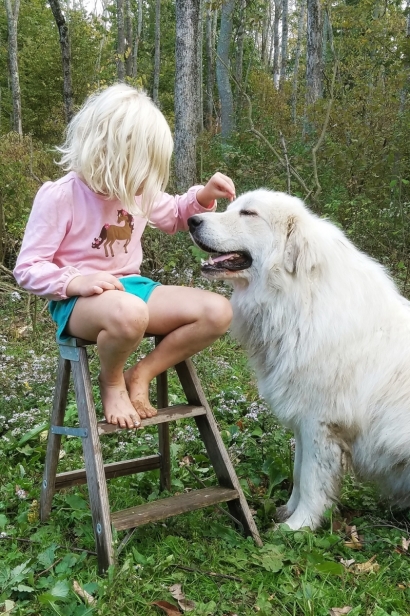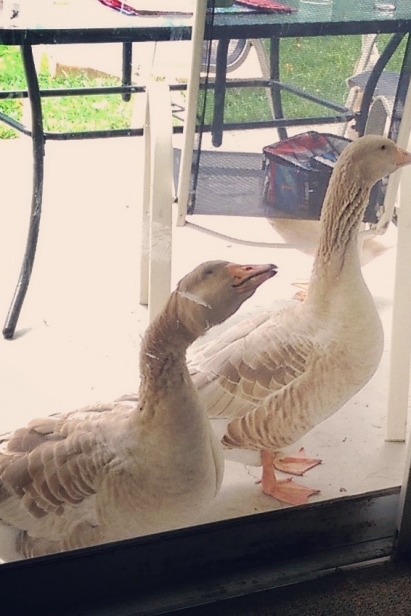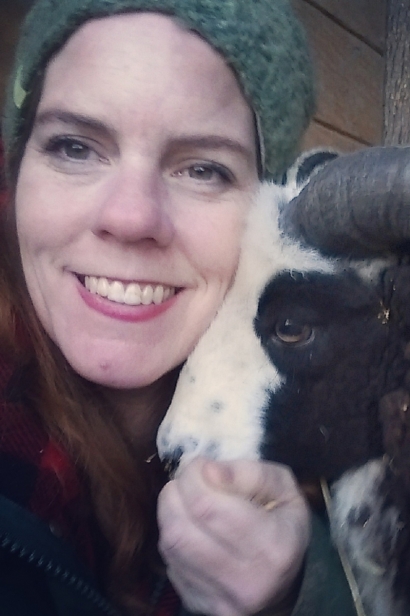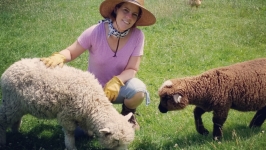New Beginnings at Ballyhope
On June 5, 2014, our 15th wedding anniversary, my family of nine arrived in Western New York and made our new home in a 174-year-old farmhouse surrounded by 20 acres of woods, creeks and fields. We left behind city life in a wonderfully diverse, tight-knit neighborhood, entwined in the lives of an amazing community of friends, neighbors and family who loved and supported us. Most difficult of all, it meant leaving our young adult son. My husband’s profession had moved us 11 hours away from the life we'd created, jumping cannonball-style into the deep end of a new beginning.
When Labor Day rolled around, the kids went off to their new school, my husband went off to his new job and I searched for ways to rebuild professional contacts and restart a freelance career. In this strange new environment, I found myself in an empty house, wondering what to do and who I was supposed to be. That first winter was long and dark. But spring, as always, finally arrived.
I have now dubbed our new home Ballyhope. In Ireland, “bally” means “place of,” and these 20 acres have become a place of hope for us.
After providing our children with the experiences and advantages of city life, we are now attempting to give them the experiences and advantages of country life. We expanded our little city chicken coop from four birds to 20-plus chickens and 12 ducks and geese. We now have five Jacob sheep and two alpacas, whose wool I plan to convert to yarn for knitting projects and roving for the kids’ needle felting. Three adopted Nigerian Dwarf goat sisters will help us clear brush and invasive species. Keeping all of them safe is Louie, our Great Pyrenees livestock guard dog, and Tonks, our barn cat.
This is our third spring at Ballyhope, making this past winter my third year of planning my potager garden. Potager gardens are basically French kitchen gardens, “potage” being French for soup.
An enthusiastic planner, I have grid paper drawings of various scales. I've read countless books on potager gardens, and ancient monastic gardens, and manor gardens and Victory gardens. I have pored through the pile of seed catalogs that arrive every February. I have a garden Pinterest board boasting 134 pins and counting.
What I don’t have is a garden. I become mired in the planning stage and can’t get myself over the hump to the actual implementing stage. Inertia is real, y’all. (My mom taught physics. Hi Mom!) But this is the year. I don’t want another summer of buying cucumbers for a dollar apiece (my kids eat a lot of cucumbers), or spending $2 for a small bunch of parsley.
Like monastic and country manor gardens, potager gardens incorporate fruit, vegetables, herbs and flowers, typically intermingled in raised beds that form an overall pattern or design. My plan also includes a small chicken coop to house a few hens who will work the compost piles.
My complete garden area layout is almost 4,000 square feet, with the main garden bed composed of three broken, concentric squares. I understand the foolishness of attempting to build the entire garden in one year. However, I also know that if I only start with the first two squares, chances are very high that the final and largest square will never get built. So, my hope for this year is that we will get the entire area fenced, the inner two squares built and partially planted, the compost area enclosed and the fruit trees planted.
Our soil is a very dense clay, and in western New York, we get a lot of rain. Drainage is definitely a problem. My future garden area was originally designated the kids’ soccer field, but it proved to be more of a large soccer puddle. The raised beds will need to be at least 12 inches deep, but I’d love to have them 18 inches with a layer of gravel at the bottom. We have a good-sized pile of composting manure and hay (dubbed “Poop Mountain”) that should be a great addition to the soil in the beds.
Besides all of the fruits, veggies and herbs my family might love, my plan also includes planting various grains and other fodder to feed our livestock. We'll never have a large-scale livestock operation, but the food needs of our small flocks and herds add up, and I’d love to be able to supplement them. Just the excess or waste from the garden will have them in seventh heaven.
So, this spring will be a very productive one at Ballyhope. We’ll get it done. I vow it. There is a tale from the ancient Desert Fathers that has always rung true for me, about a young monk who is struggling with restlessness. His elder says to him, “Go sit in your cell and give yourself to the walls,” meaning the past is the past and the future is unknown. Both are fantasy. They are no longer reality for me. This place is my reality. This place and time is where I need to commit myself. Truly, “the grass is greener where you water it.”
Sometimes, inertia must be overcome by an internal force of will. You just need to pinch your nose and yell “Oregano!” as you cannonball into the next stage.










